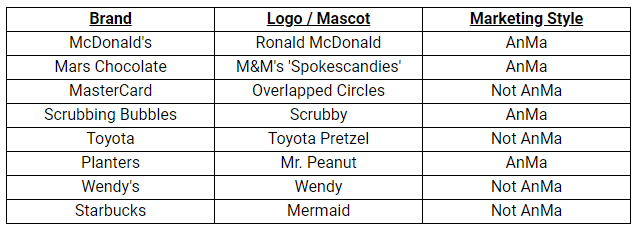An analysis of the best- and worst-case outcomes by utilizing anthropomorphic marketing techniques.

Your business, like many others, faces the age old challenge of standing out from the crowd, differentiating itself against competitors, and ultimately, winning the bid of customers who continue to improve their business selection savviness. Marketing appears to stand as a beacon of hope for many businesses as the best method to achieve this goal, and for the most part, a beacon it is. Marketing in the 21st century, however, has become akin to navigating a minefield; larger, more experienced companies appear to have all the equipment they need to make the task trivial, and the successful smaller companies appear to have managed to etch out their name by sheer luck. Fortunately, there is much more to marketing for small businesses than luck of the draw, and the tools the megacorporations use are accessible to all. Their accessibility, however, should not be mistaken for their applicability to all circumstances.
That is to say, successful marketing is applying the right technique at the right time. In this article, we will discuss a new technique that you can add to your business' marketing tool belt, to be implemented when the right circumstances arise. This technique requires a precursor though: marketing through the anthropomorphization of your brand carries with it several incredible benefits and drawbacks. It cannot be understated enough that this is not the be-all, end-all marketing strategy that will magically solve all your marketing problems. Anthropomorphized marketing strategies are just another tool that has to be used at the right time. What, then, is the right time? Or, more importantly, what is anthropomorphized marketing?
As difficult or scary as the word may seem, you are already accustomed to anthropomorphized marketing (henceforth AnMa for brevity). AnMa is the technique of taking a brand - either in its entirety, or just a specific product/division - and making it seem human. Perhaps you know of the Michelin tire man? He is an outstanding example of an anthropomorphized brand; the tires themselves, an inhuman object, have been stacked into a human shape, given a face, emotions, and human-like movement. Tires are not human in any regard, and yet, the Michelin tire man stands (quite literally) tall as an imitation of its customers. Contrast this with a brand that has virtually no AnMa: Nike. The swooshing check mark and catchy tagline of "Just Do It" are fairly recognizable around the world, but this brand has not humanized themselves at all. While their ads display hardworking, fit individuals clad in the Nike gear, the logo and brand itself remains totally inanimate; there is no smiley face hidden in the check mark, no Nike mascot, and no features of the gear that makes it appear like anything more than just that, gear. And just like that, you can see the stark difference in two massive companies' advertising strategies; one employing AnMa, and the other not. To help draw the distinction clearer, let us name a few others on each side. I would invite you to cover the rightmost side of the table below as an exercise to test your understanding. See how you do!

How did you fair in your guessing? Did the last two trick you? If not, congratulations on seeing the subtle but important difference in AnMa. If not, allow me to explain. Compare Wendy's and McDonald's mascots (not logos, the McDonald's Golden Arches are not the focus here) and you can start to see the differences in the utilization and intent behind the companies' use. Wendy, the pig-tailed redhead, bears a human-esk shape, no doubt, but that is the complete extent of her "human" characteristics. She has no voice, no clearly defined face or features, no movement, and no personality. Wendy's does not have Wendy appear in the advertisements (barring her appearance in the logo), she does not act as a spokesperson; Ronald McDonald, on the other hand, is very much humanized - at least, as human as you can make a clown! He has a voice, friends, emotions, and is relatable in some regard. Now that we understand the differences between AnMa mascots, we beg the question "why anthropomorphize?"
This discussion and analysis is continued on our next blog entry.
